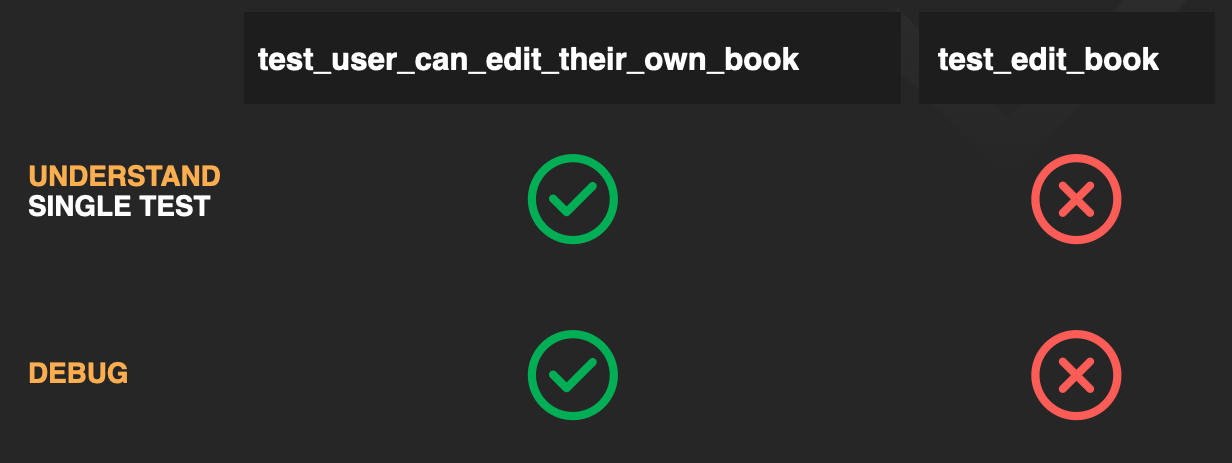Here it is in PyCon US 2023
Just like with product code, if we put too many things in the same place we get a mess.
My rule of thumb is to try hard to test a single fact about the behavior of the code. And it helps if I use these specific words mentally.
SINGLE. FACT. About the BEHAVIOR.
Example
Let’s continue with our example from the previous post, and say we have a book store and we’re testing the edit book functionality.
For example, that’s a single fact about the behavior the code:
test_user_can_edit_their_own_book
And, this is not a single fact, it’s too general:
test_edit_book
How do they compare?
- Easy to understand?
- Single fact test: It’s clear what the test checks. It’s clear that it only checks that.
- General test: we’ll need to read and understand all the test code to know.
- Easy to debug?
- Single fact test: If it fails, it’s clear what functionality stopped working. And because it’s small, it’ll be easy to debug it.
- General test: if it fails, anything related to edit book might have failed. We’ll need to dig in. And it does a lot of things, so debugging might be a lot of work.

Conclusion
Try to have each test case will test a SINGLE FACT about the BEHAVIOR of the code.
This makes a huge difference and it’s worth it to invest a lot into this.
